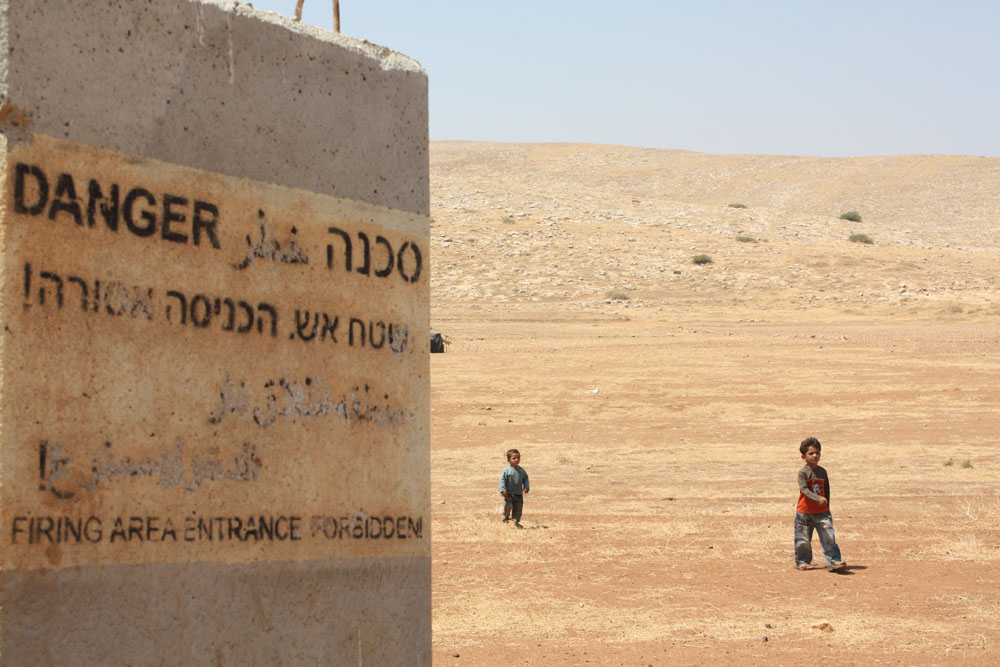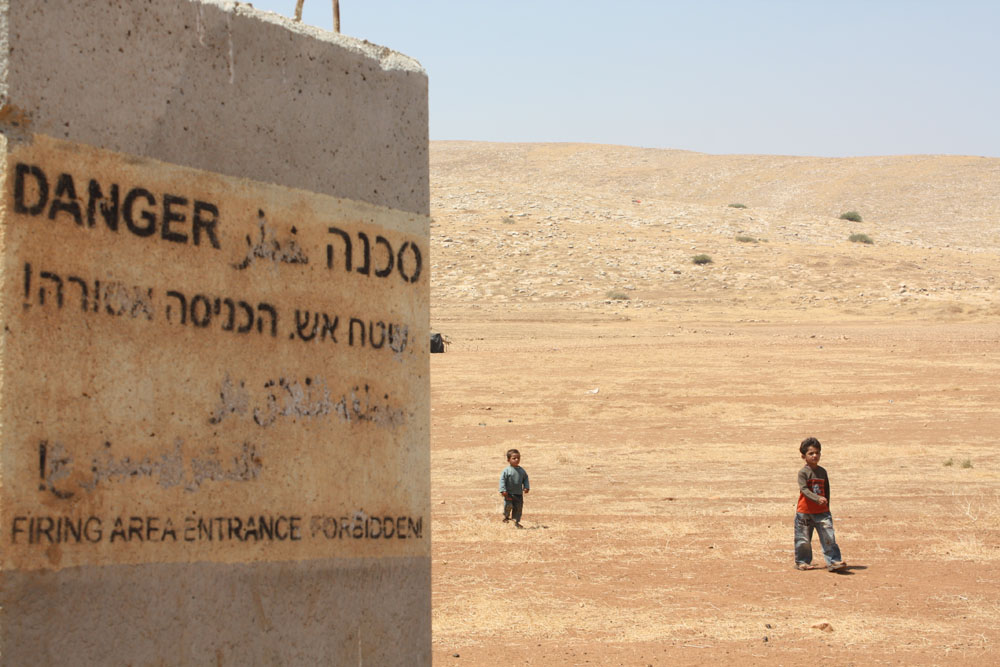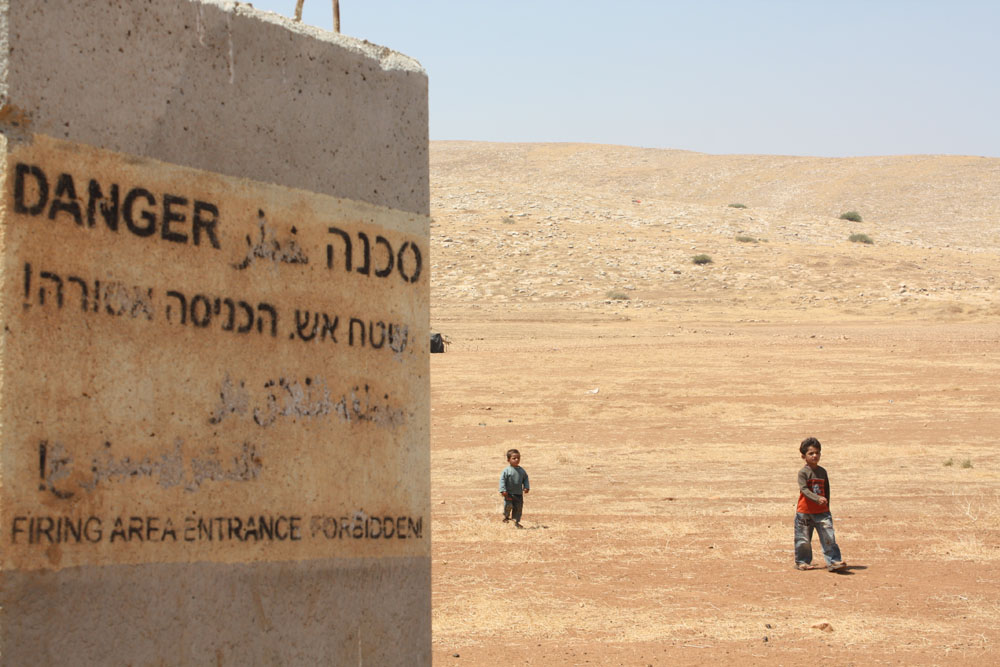Paranoia in Xinjiang; Harmonious Confusion in Kaifeng
by Sarkis Pogossian, World War 4 Report
International eyes are on the case of Córdoba House, the Islamic community center slated for two blocks away from “Ground Zero” in New York City, which has been met with vociferous protests from the jingo legions.
Across the planet, on the remote steppes of China’s western Xinjiang province, mosques are being targeted by the government for surveillance, infiltration and indoctrination one year after a wave of deadly unrest in the region. Last summer’s riots in the provincial capital Urumqi pitted the indigenous Uighurs—a Turkic and Muslim people—against Han settlers from the east. In August, a month after the riots’ one-year mark, a terror attack claimed the lives of six military police in Urumqi, as an assailant rammed his explosives-laden car into a highway checkpoint.
Xinjiang seems headed into a dystopian situation where an authoritarian state is opposed by militant Islamic factions—predictably resulting in a policy of official Islamophobia which will only harden the will of the extremists, and serve as their recruiting tool.
Elsewhere in China, Islam flourishes far from the influence of fundamentalism that now emanates from the Middle East, through Pakistan, Afghanistan and Central Asia. In Muslim enclaves such as Kaifeng, on the banks of the Yellow River in Henan province, mosques permit women to be imams—a grave apostasy for the fundamentalists. Co-existence and syncretism with Buddhism, Taoism and even Judaism is deeply ingrained. The state appears to take little interest in the mosques, and an ethic of laissez-faire prevails in spiritual matters. The government is even making an effort to export the tolerant traditions of the Kaifeng Muslims to restive Xinjiang.
Which seems to indicate that even the authoritarian Chinese state is more sophisticated than the USA’s reactionary nativists in its perceptions of Islam.
Big Brother in Urumqi
Video surveillance is growing explosively as in China, where seven million cameras already watch streets and businesses, with experts predicting an additional 15 million cameras by 2014. Rights observers warn that Uighur mosques and Tibetan Buddhist monasteries are being especially targeted by the state’s electronic eyes.
In Urumqi, where last year’s unrest left some 200 dead, there are now 47,000 cameras in place, with plans to install another 13,000 by year’s end. Residents say a disproportionate number are trained on mosques and Uighur districts of the city.
Similarly, following the March 2008 riots in the Tibetan capital Lhasa, authorities awarded China Telecom—maker of the “Global Eye” surveillance cameras—a $6.5-million contract to install cameras at 624 locations around the city. The surveillance program has been given the Orwellian sobriquet of “Peace in Lhasa.” A cluster of cameras has also monitored the Tibetan neighborhood around Beijing’s Yonghegong Temple since the prelude to the 2008 Olympics there.
Along with the escalated surveillance, China’s Ministry of Public Security has launched a program of state control over spiritual institutions in the restive western regions of Xinjiang and Tibet in recent weeks. The program includes intensive propagandizing of Xinjiang’s Muslim clerics and Tibet’s Buddhist monks in the importance of patriotism and party loyalty. The increased oversight of mosques in Xinjiang has preceded the onset of Ramadan, wile the similar measures at Tibetan monasteries followed the recent visit of the government-designated Panchen Lama to Lhasa and other areas in Tibet.
The program has predictably sparked resentment among the Uighurs—especially over the issue of non-Muslim officials and party cadre attending meetings at mosques. In an incident that received little coverage outside a lone report in the Sri Lanka Guardian, local Uighurs apparently protested in Peyziwat county of Xinjiang’s Kashgar prefecture on July 24 against a Communist Party-organized meeting at the village mosque to hold a speech contest on the them “Love the Country, Promote the Homeland.”
Rebiya Kadeer, exiled president of the World Uyghur Congress, who lives in the US, has protested the campaign, as have other Uighur diaspora leaders. Abdukadir Asim, a Uighur cleric based in Turkey, declared: “It is a common principle among all religions that the privacy of the place of worship is fundamental. It is a strange and abhorrent event that communist propaganda was conducted in a mosque.” He criticized the general secretary of the Organization of the Islamic Conference, Ekmelledin Ihsanoglu, for not raising the issue on his recent visit to China.
Along with the effort to tighten control over the mosques, the Chinese state has launched a program for the demolition of exclusively Uighur areas in Urumqi, and forcing the displaced residents to re-settle in apartment complexes built for them in areas dominated by Han Chinese. This has also been resented by Uighur leaders an attempt to erode their identity.
A ban on the use of loudspeakers for the call to prayer at Xinjiang’s mosques has also been imposed, according to a recent account by reporter Ananth Krishnan who traveled through the region for India’s Hindu Times. But outside the now-silenced 550-year-old grand Id Kah mosque in Kashgar, a police van patrols at prayer time, its own loudspeaker issuing a recorded message urging all ethnic groups “to maintain harmony, support the Communist Party and serve the motherland.” A battalion of armed police watch over the square.
The Female Imams of Kaifeng
The Muslims of Kaifeng and central China are known as the Hui, and constitute one of the 56 official “nationalities” of China. The Hui probably share an ethnogenesis with the Uighurs. Islam was brought to China by Arab conquerors in Central Asia and more significantly by Persian traders on the Silk Road beginning in the eighth century. The Uighurs were the first to convert. In the 13th century, they allied with the Mongols in their invasions of China, serving as both military advance guard and the official scribes of the Mongol court. (The Uighur script was used by the Mongol bureaucracy until Chinese was eventually adopted.) Through trade and warfare, many Uighurs ended up considerably to the east of what is now Xinjiang. These inter-married with Han, eventually adopting the dominant Han language and culture, while remaining true to Islam. They are today the Hui, who have an Autonomous Region in Ningxia, much as Xinjiang is officially the Uighur Autonomous Region. There are also large Hui populations in the provinces of Gansu, Qinghai, Hebei, Shangdong and Yunnan as well as Henan.
A recent report by the USA’s National Public Radio notes how Kaifeng’s Muslim community distinguishes itself in the Islmaic world with a long tradition of female imams. These imams—or ahong as they are called in China—perform many of the same duties as their male counterparts, leading prayers and teaching the Koran, although they do not lead funeral rituals.
“In a country with about 21 million Muslims, women also have their own mosques to worship in—another practice different from other countries,” said Shui Jingjun, of the Henan Academy of Social Sciences who co-authored a book on the subject. The tradition of Koranic schools for girls in central China began in the late 17th century—mostly in Henan but also in Shanxi and Shandong provinces. Some 100 years ago they evolved into women’s mosques, starting in Henan.
The state-controlled Islamic Association of China has given political assistance to establish some women’s mosques in northwest China, where historically there have been none—a probable effort to undercut the influence of fundamentalism in the restive region. Guo Baoguang of the Islamic Association of China admitted to NPR that the effort had met with some resistance. But he also offered this optimistic quote: “Given the fast development of China’s economy, and as its political status rises, I think Chinese Islam will become more important in the Islamic world. The development Chinese Islam has made, like the role played by Chinese women, will be more accepted by Muslims elsewhere in the world.”
For the moment, China’s Muslims are virtually alone in permitting women to be imams. Morocco became the first Arab country to officially sanction training women as religious leaders in 2006.
At Kaifeng’s Wangjia Hutong women’s mosque—China’s oldest, built in 1820 as a Koranic school for girls—14-year veteran imam Yao Baoxia leads prayers. NPR notes that as she leads the service, Yao stands alongside the other women, not in front of them as a male imam would. But she asserts that her role is the same as a male imam. “The status is the same,” Yao said. “Men and women are equal here, maybe because we are a socialist country.”
Kaifeng: Searching for the Jews, I Find the Muslims
I visited Kaifeng recently in search of traces of China’s one indigenous Jewish community, which flourished in the city from the ninth century. By official histories, the last of the Kaifeng Jews disappeared in the 1860s, when the dwindling community sold their synagogue—or, by some accounts, 1841, when the Yellow River burst its banks and the temple was removed to strengthen the city walls. The claim that the Kaifeng Jews do not survive was recently contested by reporter Matthew Fishbane of the New York Times, who visited living self-identified Jews in the city this spring—despite the fact that Jews are not one of China’s official nationalities.
The Jews of Kaifeng, who also arrived on the Silk Road from the west, were known to their Han neighbors as the “blue-turbaned Muslims”—the exotic faith of Judaism apparently considered to the Han a mere variant of Islam. Having not yet seen the New York Times article, I arrived in Kaifeng cold—and the responses to my inquiries indicated that the confusion persists to this day.
Kaifeng, China’s capital in the Northern Song Dynasty (960-1127), is today a chaotic modern city, with much more of a “third world” feel than Beijing. Like all Chinese cities, it is rife with KFCs and crass commercialism—until the main drag ends in a traditional arch guarded by carved lions. Beyond this lies Old Kaifeng. Crossing over is like going back centuries in time.
Asking locals through my interpreter where the old Jewish district could be found, I was directed to Zhuxian, a peasant village a 20-kilometer bus ride south of Kaifeng—which turned out to be inhabited almost entirely by Hui Muslims. Not a trace of Judaism was in evidence, but a beautiful mosque, probably dating to the Yuan (Mongol) dynasty—in classical Chinese style, but with Arabic calligraphy in the intricate wood-carvings and relief work.
I finally figured out that the city’s most precious Jewish artifacts are sequestered in the Kaifeng Municipal Museum—literally kept under lock and key in a secret room on the building’s top floor. With special permission from the museum management, I was allowed entry. No photos were permitted. When the lights were turned on, the dusty “Exhibition on the History & Culture of the Ancient Kaifeng Jews” was revealed.
The principal artifacts are three stelae which stood outside the synagogue, telling the history of the Kaifeng Jews—dating to 1489, 1512 and 1679. The interpretive material in English refers to the synagogue as a “mosque.” The caption for the 1489 stele, which was erected after the demolition of the original synagogue dating to the 12th century, reads: “Stele of Rebuilding the Mosque.” The badly worn writing is all in Chinese.
On a China tourism website, I had read that relics from the last synagogue—particularly blue tiles from its roof—were still guarded by the Muslims at Kaifeng’s Dongda Si, or Eastern Grand Mosque. So the following morning, I took a bicycle-taxi to the Dongda Si, another magnificent centuries-old mosque, which lies hidden amid a warren of alleys invisible to the eyes of Kaifeng’s few foreign tourists. My interpreter’s questions about the Jewish relics were met with incomprehension, but we were welcomed to look around the mosque and take photos. Amid the exquisite wood-carvings with both Arabic and Chinese calligraphic work were two cross-beams which were a special historical prize—carved with lines in an ancient and esoteric script, which I was unable to certainly identify, despite my queries. This was possibly Kufic, the archaic form of Arabic in which the early Korans were written. Or possibly it was the ancient Uighur script, which was loosely based on Kufic through the intermediaries of the Persians—speaking to the ancient roots of the Hui culture.
The New York Times article indicated that a couple of small tourism companies are offering trips to Kaifeng for those seeking the city’s Jewish heritage, and perhaps I would have seen more of what I was looking for if I had known about them—for instance, the site of the old synagogue on Teaching Torah Lane. But my blind probings led me to an unexpected look at Kaifeng’s unique syncretism and fortuitous confusion.
Please click here for Sarkis Pogossian’s photo essay from Kaifeng.
—-
Struggling World War 4 Report researcher Sarkis Pogossian incurred great personal debt to travel to China for this story. If you appreciate his reportage, please make a donation, large or small.
Sources:
Big Brother widens his watchful eye in China
Toronto Globe & Mail, Aug. 12, 2010
In Restive Chinese Area, Cameras Keep Watch
New York Times, Aug. 2, 2010
Beijing Tightens Up Control Over Monasteries & Mosques
Sri Lanka Guardian, Aug. 25, 2010
Faith Against Odds
The Hindu, Aug. 8, 2010
China’s Female Imams
Illume, Aug. 17, 2010
Female Imams Blaze Trail Amid China’s Muslims
National Public Radio, July 21, 2010
China’s Ancient Jewish Enclave
New York Times, April 4, 2010
Resources:
Islamic Association of China
World Uygur Congress
Uighur Language
Uygur Alphabets, Pronunciation and Language
Kufic Script
China Tours page on Kaifeng Jews
China Corner page on Kaifeng Jews
Ctrip China Guide page on Kaifeng Jews
The Kaifeng Connection
Jewish Heritage Tours of China
Chinese Dynasties
From our Daily Report:
China: arrests in Xinjiang terror attack
World War 4 Report, Aug. 30, 2010
“Ground Zero Mosque” opponent supports terrorists
World War 4 Report, Aug. 19, 2010
Prison for Tibetan ecologist
World War 4 Report, July 24, 2010
Israelis, Palestinians woo China; Kaifeng crypto-Jews caught in the middle?
World War 4 Report, Feb. 25, 2010
See also:
THE ANTI-IMPERIALIST CASE FOR TIBETAN FREEDOM
by Bill Weinberg, AlterNet
World War 4 Report, June 2008
MEMOIRS OF A TIBETAN MARXIST
Middle Ground Between Mao and the Dalai Lama?
by William Wharton, World War 4 Report
World War 4 Report, May 2008
SUFISM AND THE STRUGGLE WITHIN ISLAM
Paradoxical Legacies of the Militant Mystics
by Khaleb Khazari-El, World War 4 Report
World War 4 Report, July 2006
——————-
Special to World War 4 Report, September 1, 2010
Reprinting permissible with attribution
Continue ReadingTHE MOSQUE CONTROVERSY —IN CHINA






